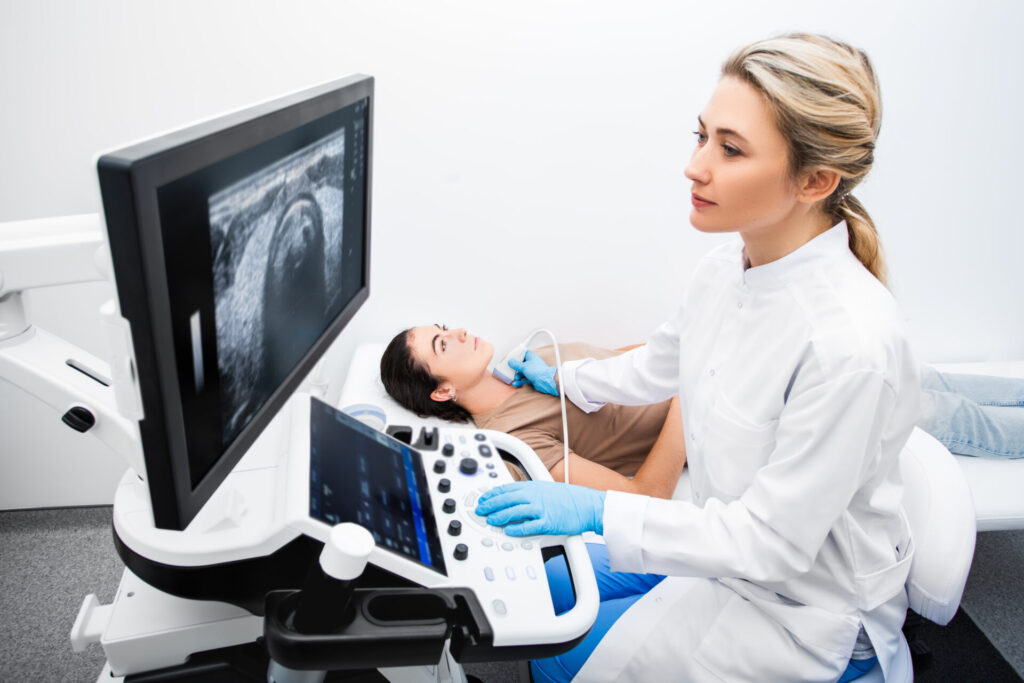This post may contain affiliate links, which means if you enroll through my link, I’ll receive a small commission at no extra cost to you.

If you’ve ever needed an ultrasound, you’ve probably noticed how prices can vary a lot depending on where you go — and whether you have insurance.
Ultrasound tests are one of the most common imaging procedures, used for everything from pregnancy scans to checking your heart, thyroid, or internal organs.
So, how much does an ultrasound cost in 2025?
Let’s break it down simply.
Average Ultrasound Cost (2025)
On average, the cost of an ultrasound ranges between $200 and $1,000 if you’re paying out of pocket.
The exact price depends on where you live, the type of ultrasound you need, and whether it’s done at a hospital or an independent imaging center.
| Type | Average Cost |
|---|---|
| Without insurance | $200 – $1,000+ |
| With insurance (after deductible) | $100 – $500 |
| Hospital-based ultrasound cost | $700 – $1,500+ |
| Independent imaging center cost | $150 – $400 |
(Sources: GoodRx, MDsave, NextGenScans, FinanceMutual – 2025 data)
What Is an Ultrasound?
An ultrasound (also called a sonogram) uses sound waves to create live images of what’s happening inside your body — no radiation involved.
It’s safe, quick, and widely used to look at:
- A developing baby during pregnancy
- Organs like your liver, kidneys, or thyroid
- Blood flow through your heart or arteries
- Soft tissue injuries, such as muscles or tendons
Because ultrasounds are so common, it’s important to understand what drives the price before you schedule one.
What Affects the Cost of an Ultrasound?
Several factors can influence your ultrasound cost, including where it’s done, the type of scan, and your insurance plan.
1. Where You Go
Hospitals usually charge the highest ultrasound prices because of additional facility fees.
If you can, check prices at an independent imaging center — they often cost 30–60% less and use the same certified technicians and radiologists.
Tip: If you’re paying cash, ask for a self-pay or prompt-pay discount. Many centers will reduce your ultrasound cost if you pay upfront.
2. What Kind of Ultrasound You Need
Here’s what you can expect to pay for different types of ultrasounds in 2025:
| Type of Ultrasound | Typical Cost (Self-Pay) |
|---|---|
| Basic ultrasound (single area) | $200–$400 |
| Pregnancy ultrasound | $300–$1,000+ |
| Vascular or Doppler ultrasound | $300–$900+ |
| 3D/4D ultrasound (elective, not covered by insurance) | $100–$200 |
More complex or multi-region scans typically cost more because they take longer and require advanced imaging.
3. Insurance and Deductibles
If you have health insurance, your ultrasound cost depends on:
- Whether it’s considered medically necessary (ordered by your doctor)
- If the imaging center is in-network
- How much of your deductible you’ve met
If you haven’t met your deductible yet, you’ll probably pay the full contracted rate — which can still be lower than retail prices.
Once your deductible is met, you’ll likely just owe your co-pay or co-insurance (usually 10–30%).
Ultrasound Cost by Location
Ultrasound prices vary by state and even city. For example:
- California or New York: $600 – $1,200
- Texas or Florida: $400 – $800
- Midwestern states: $200 – $500
- Rural areas: as low as $150 for a basic scan
You can compare ultrasound costs near you on sites like MDsave or by calling local imaging centers and asking for a “self-pay quote.”
How to Save Money on an Ultrasound
If you’re trying to reduce your ultrasound cost, here are some proven ways to save:
- Shop around. Prices can vary by hundreds of dollars even within the same city.
- Ask for the cash price. Many clinics offer 20–60% off if you pay upfront.
- Confirm it’s medically necessary. Insurance is much more likely to share the cost if your doctor orders the scan.
- Choose an imaging center. They’re almost always cheaper than hospitals.
- Ask about payment plans. Some centers will let you pay monthly with no interest.
The Bottom Line: Ultrasound Costs Are Flexible
Ultrasounds are one of the most widely used and cost-flexible medical tests.
In 2025, you can expect to pay around $200–$1,000 if you’re uninsured, or $100–$500 if you have insurance and have met your deductible.
Before scheduling your scan, take a few minutes to:
- Call ahead
- Ask for the self-pay price
- Confirm whether it’s considered medically necessary
A little planning goes a long way — and could save you hundreds of dollars on your next ultrasound.
Health shares are not insurance and do not offer insurance coverage. Membership in a health share does not guarantee the payment or reimbursement of medical expenses. Each organization operates under its own membership guidelines, which determine what expenses may be eligible for sharing. This publication is for informational purposes only and is not provided by an insurance company. For state-specific notices and full program details, please visit the respective health share’s official website.





Leave a Reply